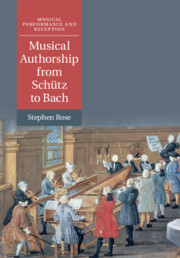Book contents
- Musical Authorship from Schütz to Bach
- Musical Performance and Reception
- Musical Authorship from Schütz to Bach
- Copyright page
- Dedication
- Contents
- Figures
- Music Examples
- Acknowledgements
- Author’s Note
- Abbreviations
- Introduction
- Chapter 1 God, Talent, Craft: Concepts of Musical Creativity
- Chapter 2 Between Imitatio and Plagiarism
- Chapter 3 Signs of Individuality
- Chapter 4 Rites of Musical Ownership
- Chapter 5 The Regulation of Novelty
- Chapter 6 Authorship and Performance
- Conclusion
- Bibliography
- Index
- References
Bibliography
Published online by Cambridge University Press: 25 May 2019
- Musical Authorship from Schütz to Bach
- Musical Performance and Reception
- Musical Authorship from Schütz to Bach
- Copyright page
- Dedication
- Contents
- Figures
- Music Examples
- Acknowledgements
- Author’s Note
- Abbreviations
- Introduction
- Chapter 1 God, Talent, Craft: Concepts of Musical Creativity
- Chapter 2 Between Imitatio and Plagiarism
- Chapter 3 Signs of Individuality
- Chapter 4 Rites of Musical Ownership
- Chapter 5 The Regulation of Novelty
- Chapter 6 Authorship and Performance
- Conclusion
- Bibliography
- Index
- References
- Type
- Chapter
- Information
- Musical Authorship from Schütz to Bach , pp. 216 - 236Publisher: Cambridge University PressPrint publication year: 2019

